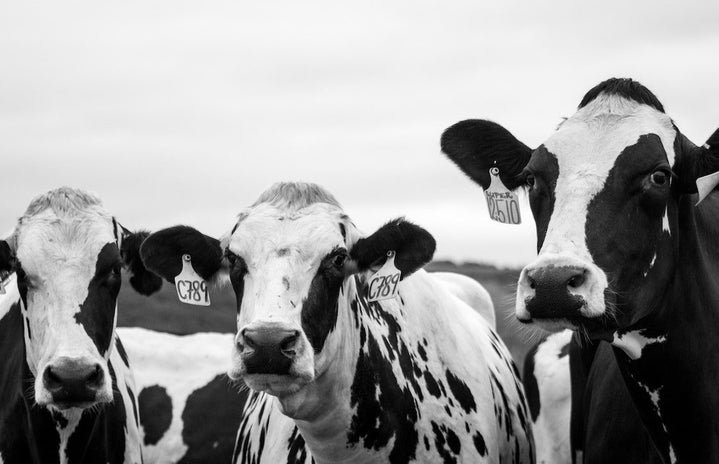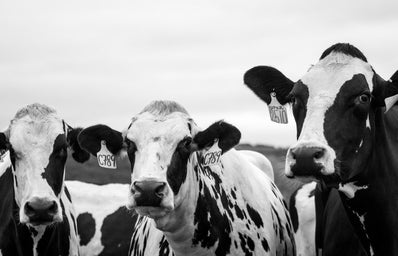Last Thursday in my economics class, my professor informed us that cows produce more milk if they are standing on sand. Apparently, cows love sand. They love standing on it, they love sitting on it; cows enjoy the warmth and softness that sand provides.
I grew up in Madison, Wisconsin: Dairy Country. There’s a certain stereotype that Wisconsin is just a large state of farmland and cows—unfortunately my home state does live up to predisposed expectations. The World Dairy Expo, the event for dairy and cow showcasing, takes place every year in my hometown. In elementary school, my class went on a field trip to The Expo to learn more about cheese production. They gave us free string cheese and strawberry milk before we left.
Growing up in Madison by no means makes me a cow expert. Until last Thursday, I had never given any thought about how cows were specifically raised or treated. So, I have taken up the challenge of discovering more about the animal’s care.
Despite my professor’s tidbit on the properties of sand, most cow enclosures actually have cement floors due to its cheap cost and easy maintenance. Even for cows, cement flooring is not comfortable to sit or stand on. Cows are less inclined to lay down because of the rough surface. A study conducted by The Human Society concluded that “Reduced lying or resting has been associated with increased stress… reduced levels of growth hormones… development of hoof lesions”. Overall, the research concluded that lying down has a higher priority to cows than eating or social contact.
To keep costs low and quantity produced at a competitive level, farmers resort to a multitude of methods to manage their cows. Especially in the last few decades, cow maintenance has shifted the care away from the animal, and more towards the end product that is sold. On top of poor flooring, there is a plethora of questionably ethical and inhumane care methods to farm animals.
You can learn more about cow treatment here: https://www.humanesociety.org/animals/cows



